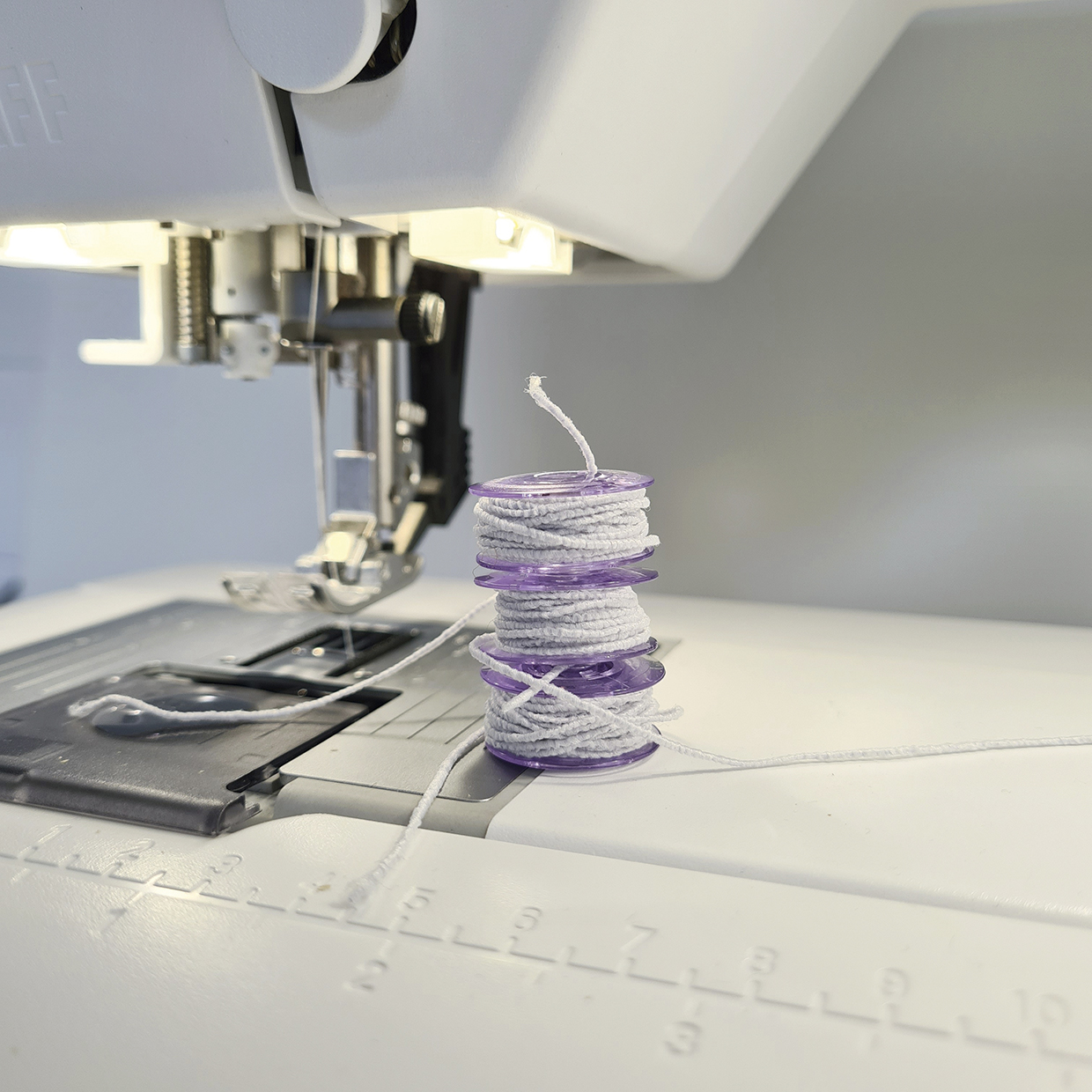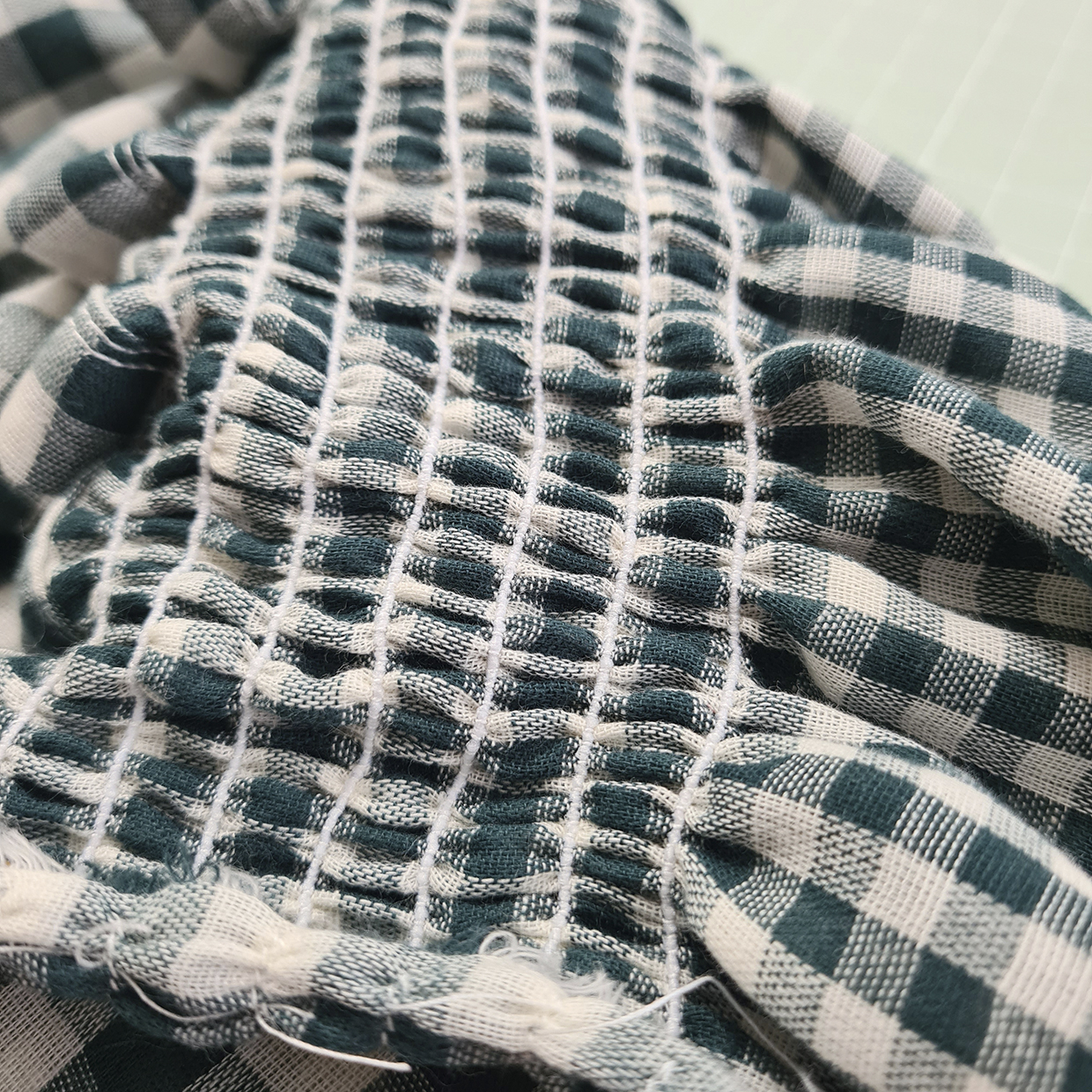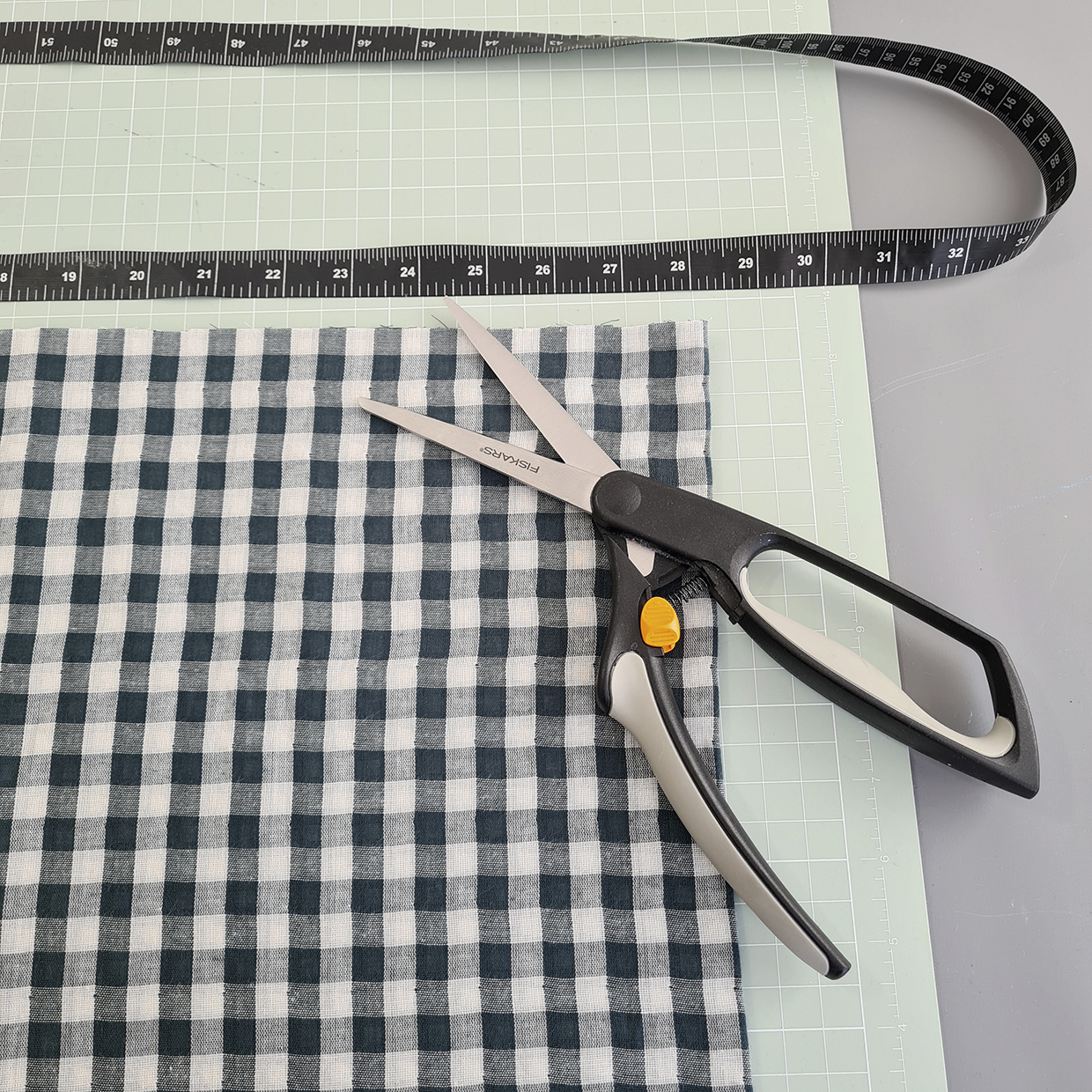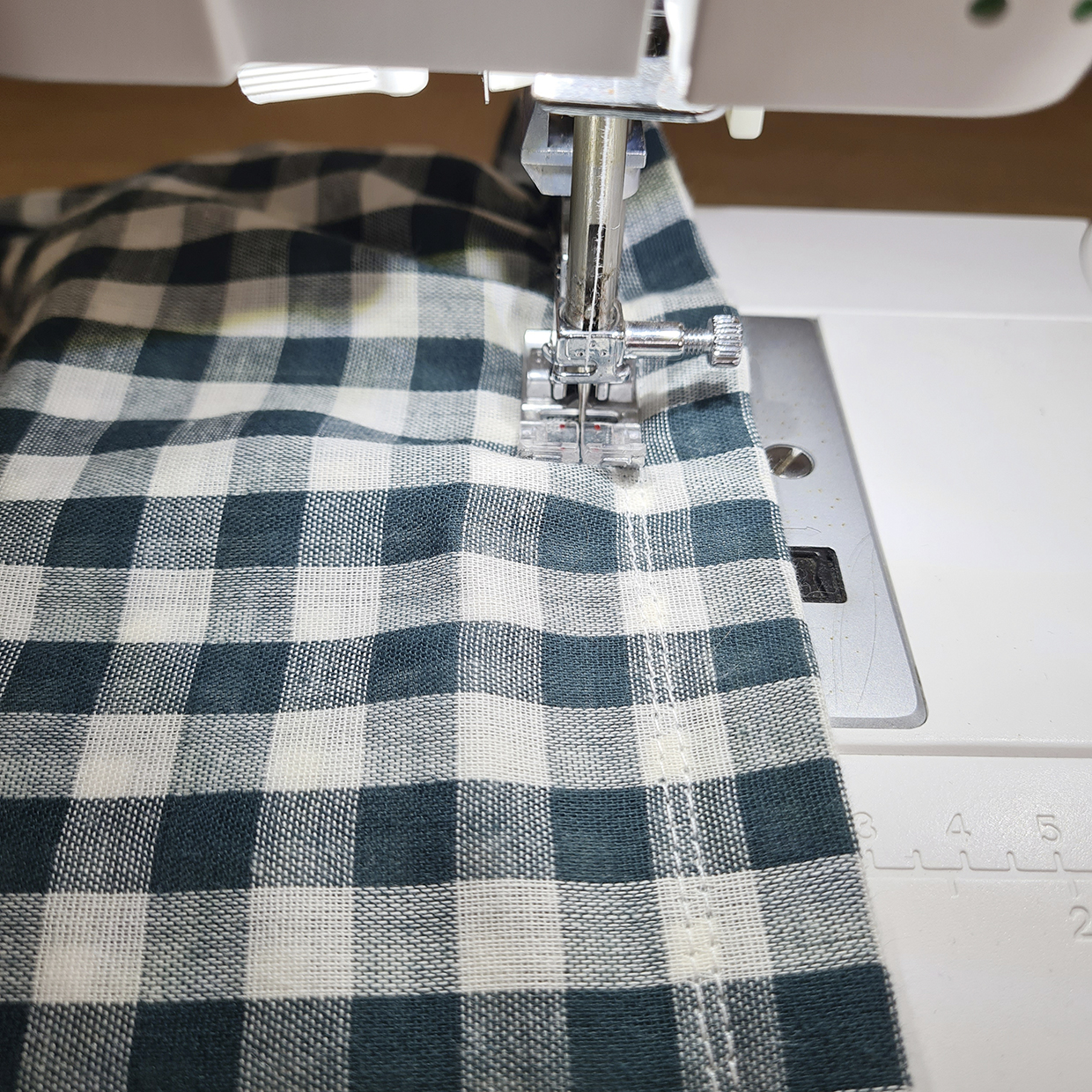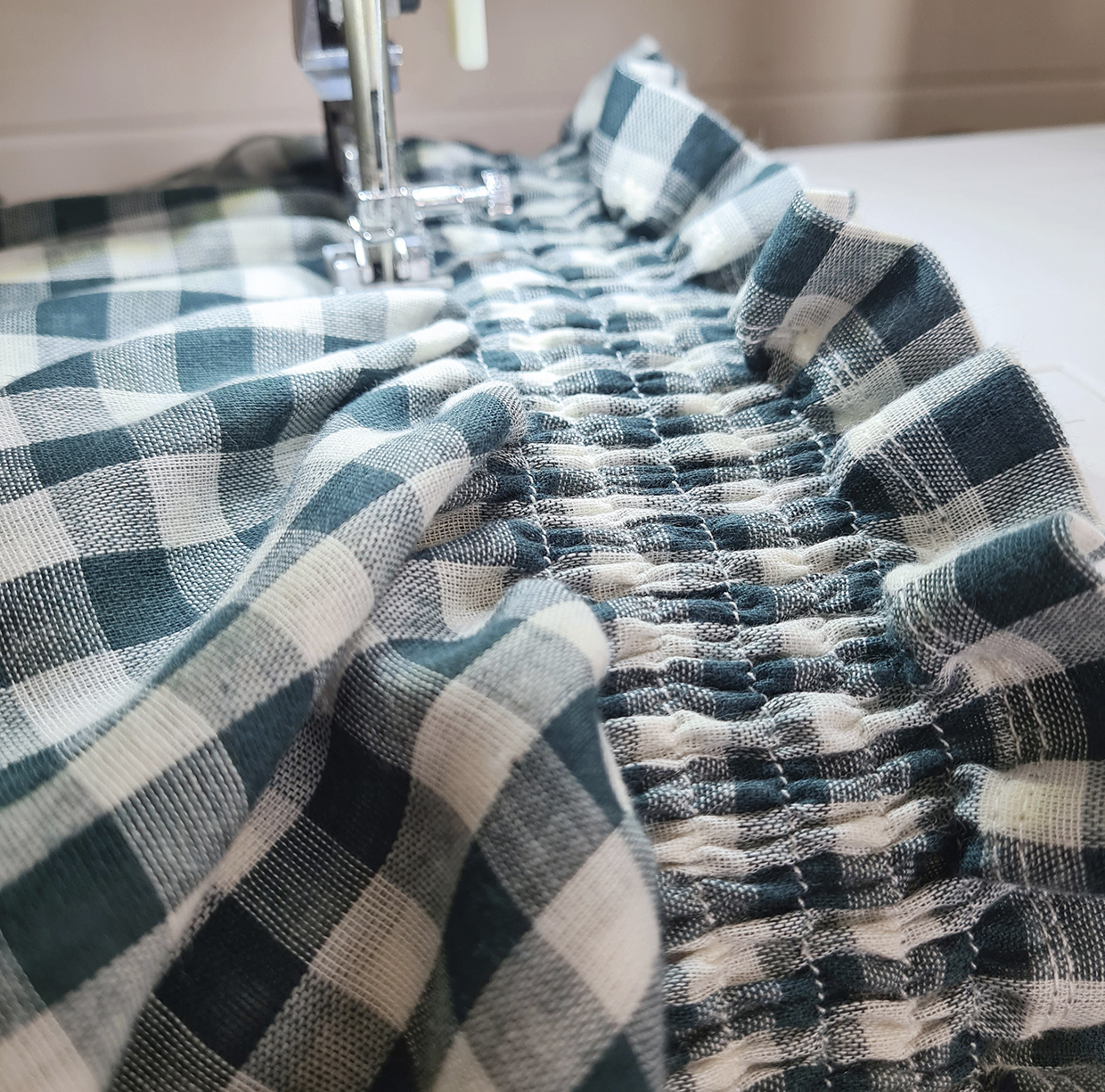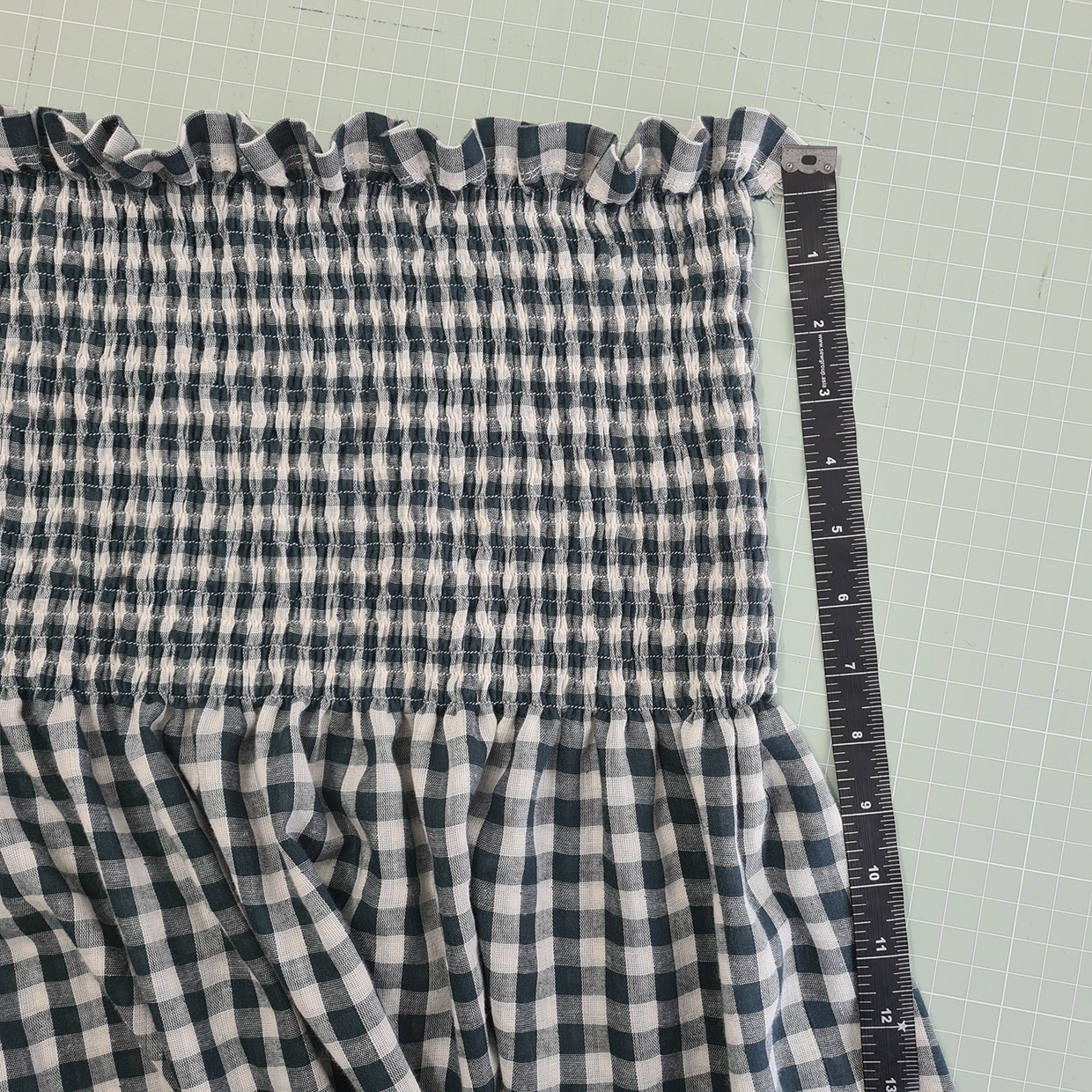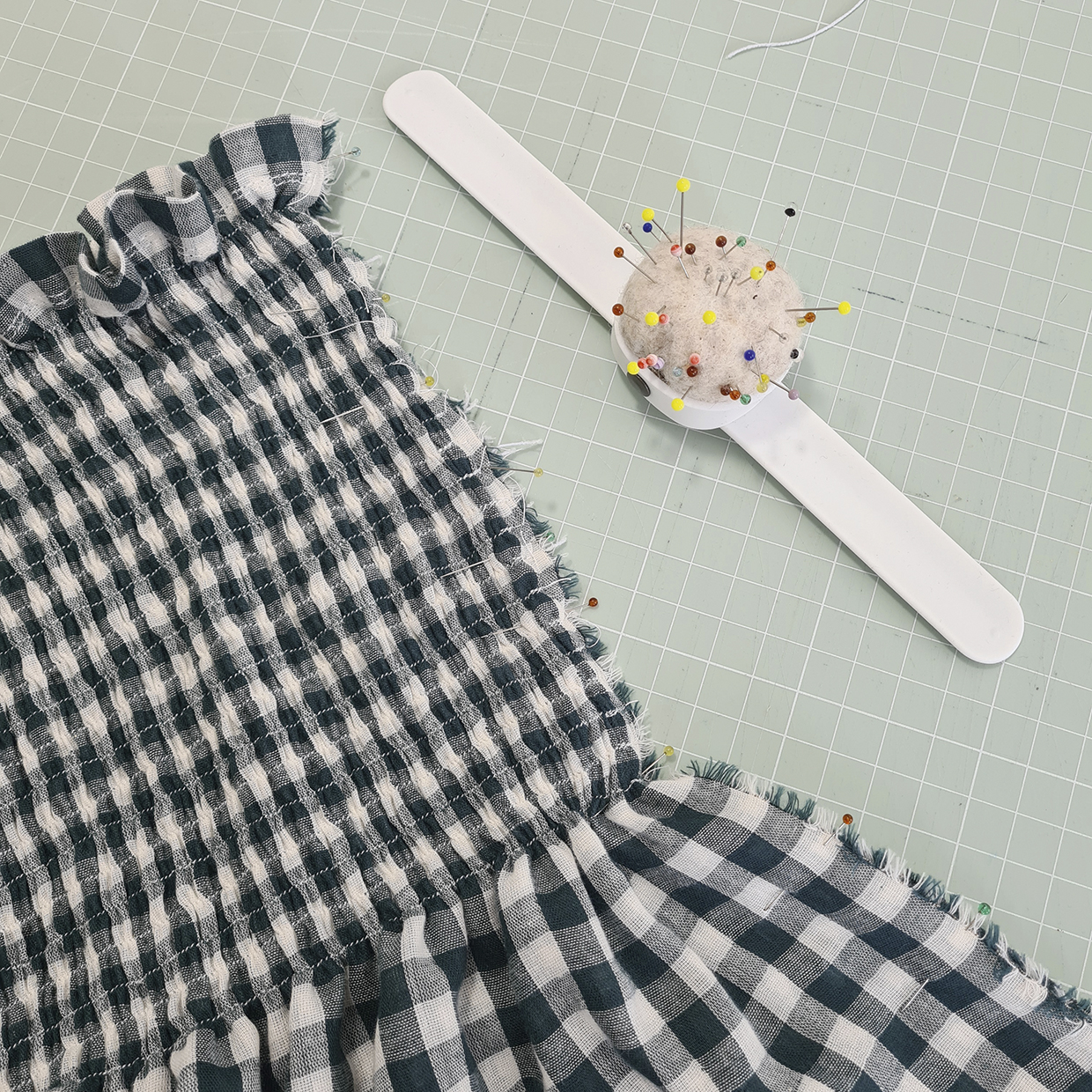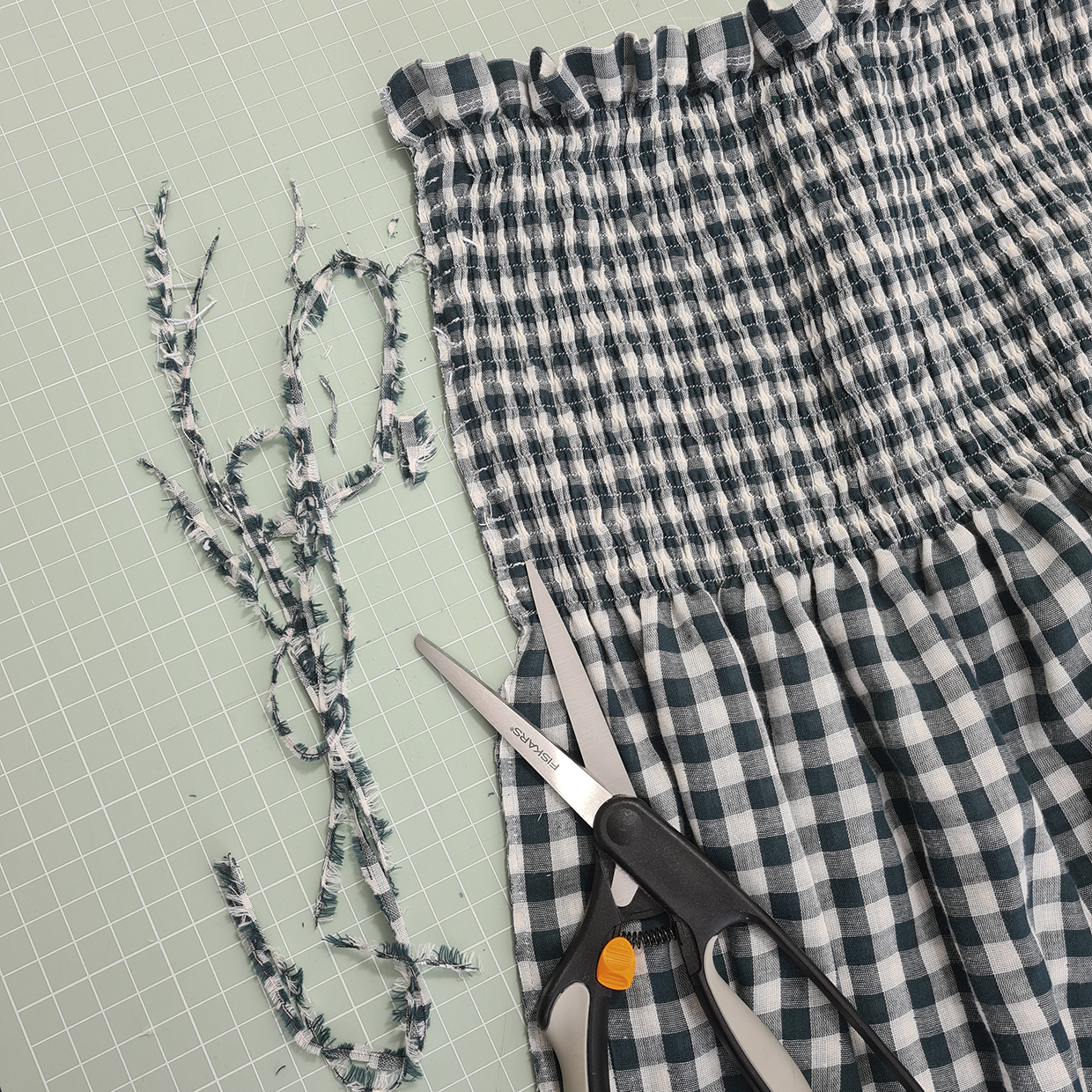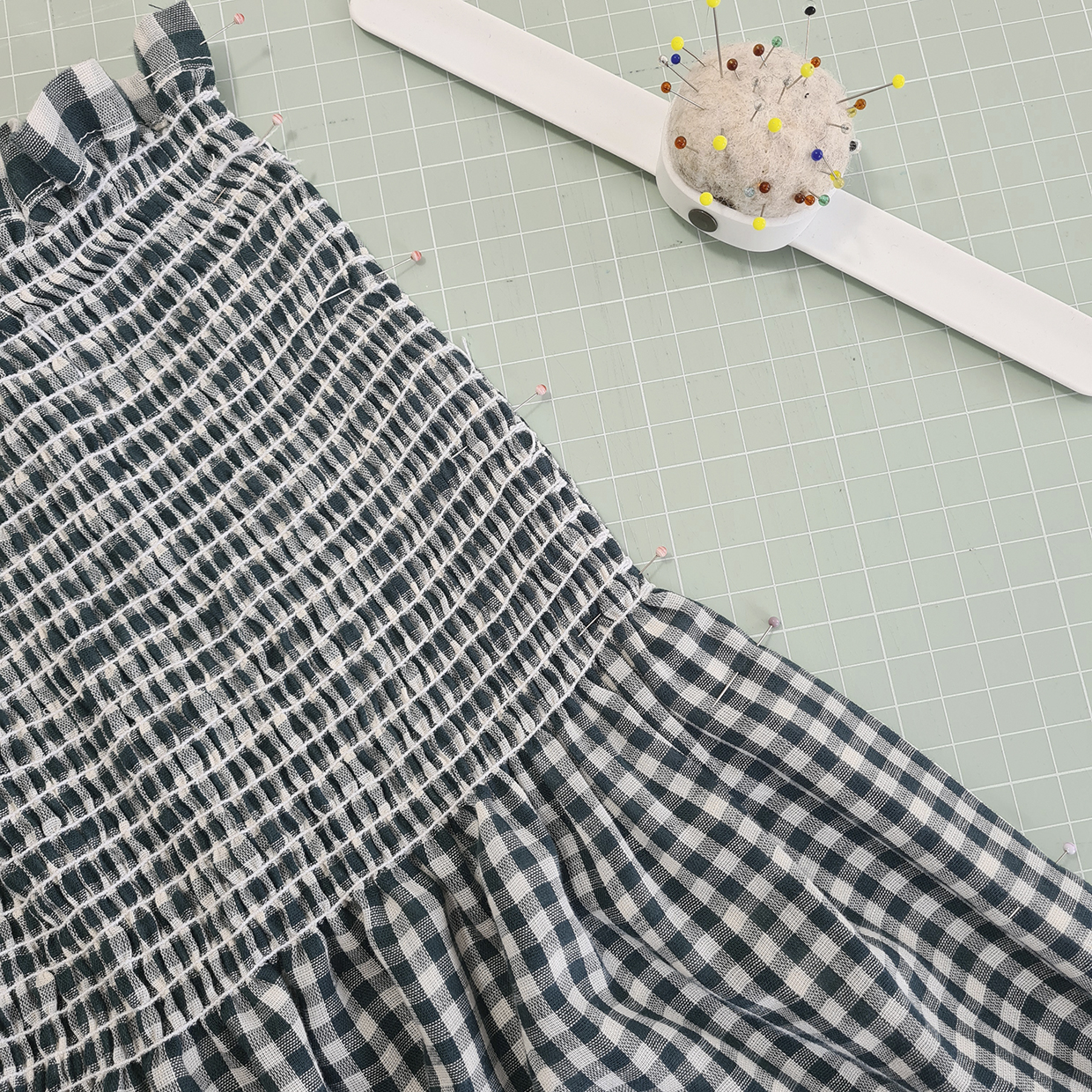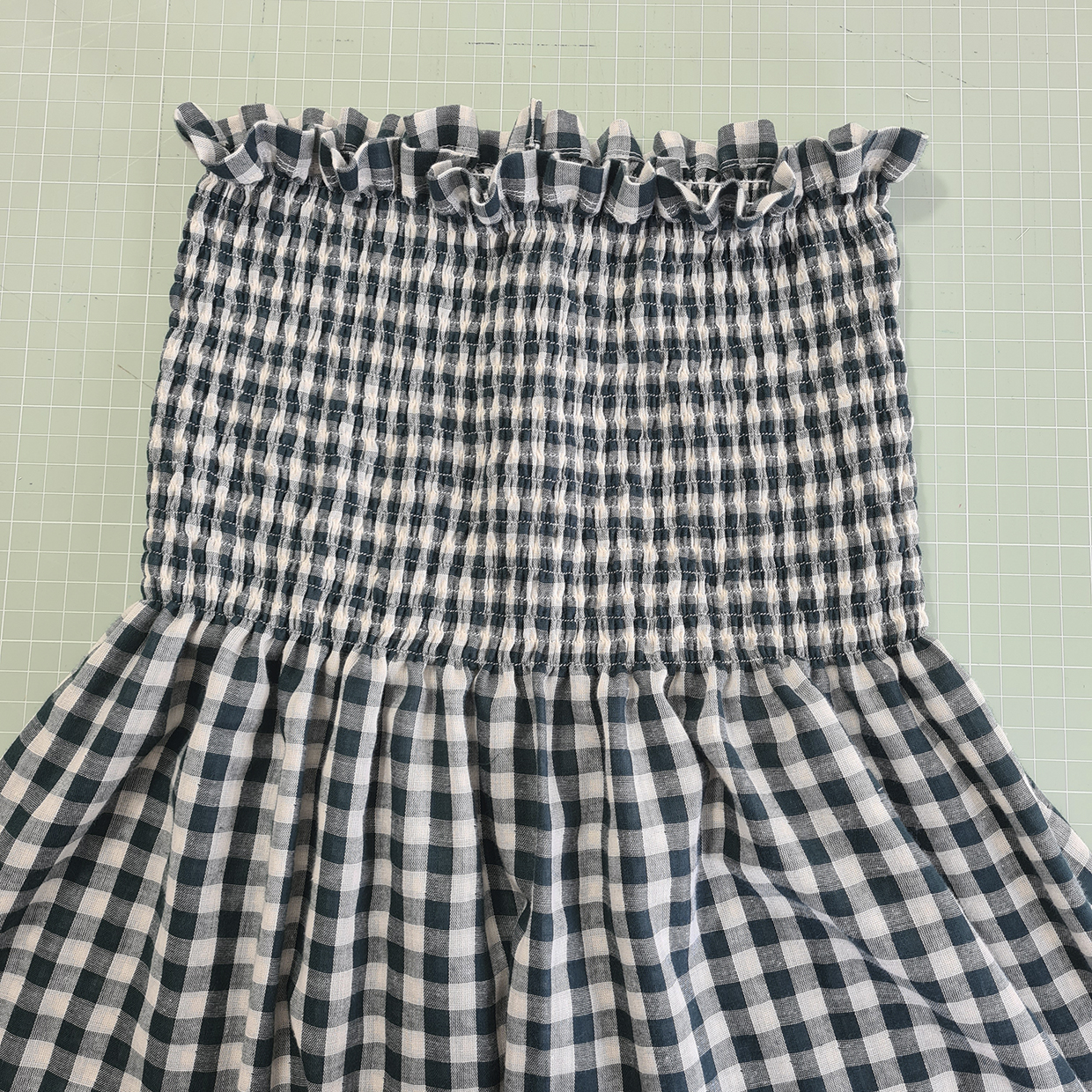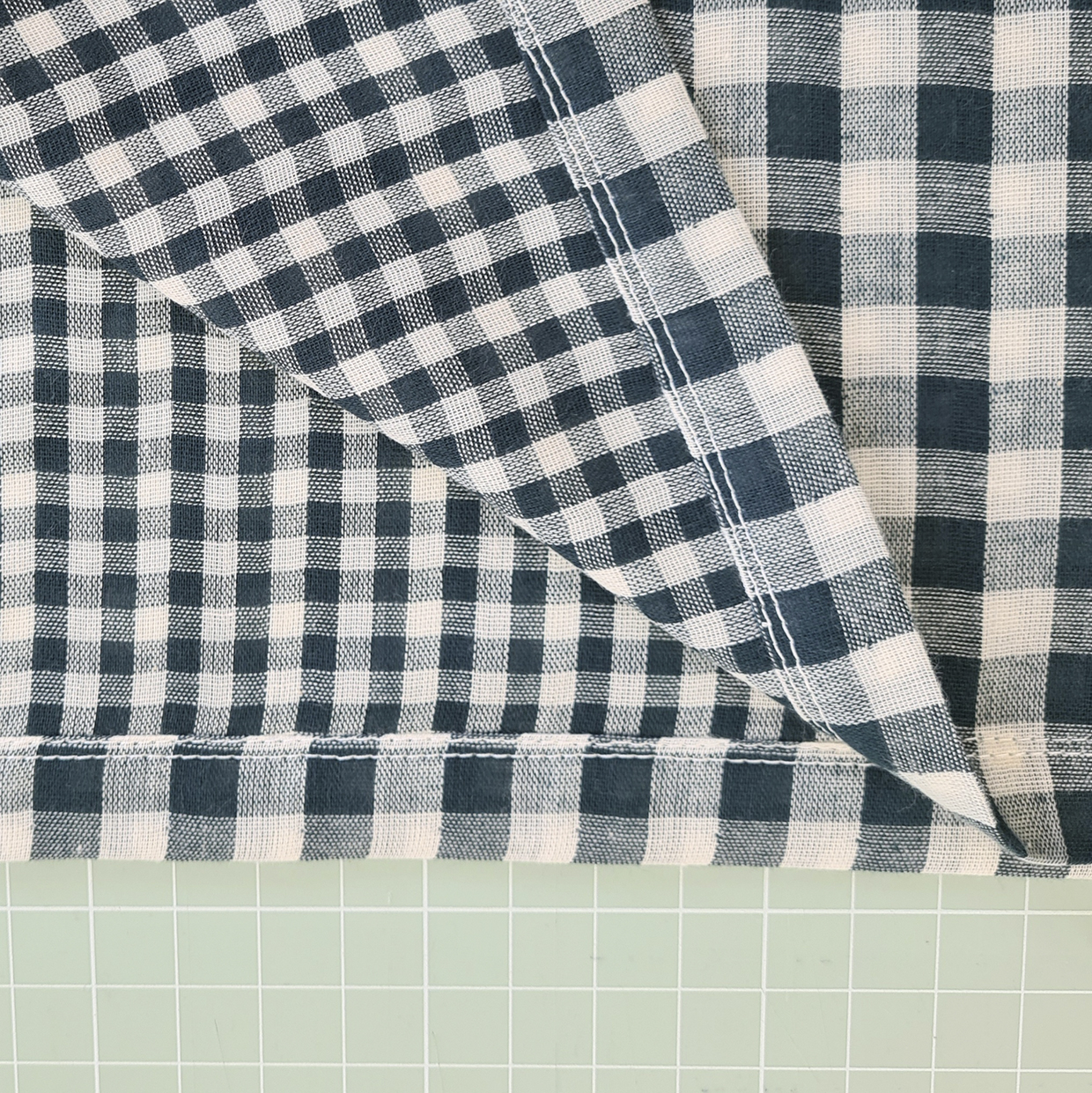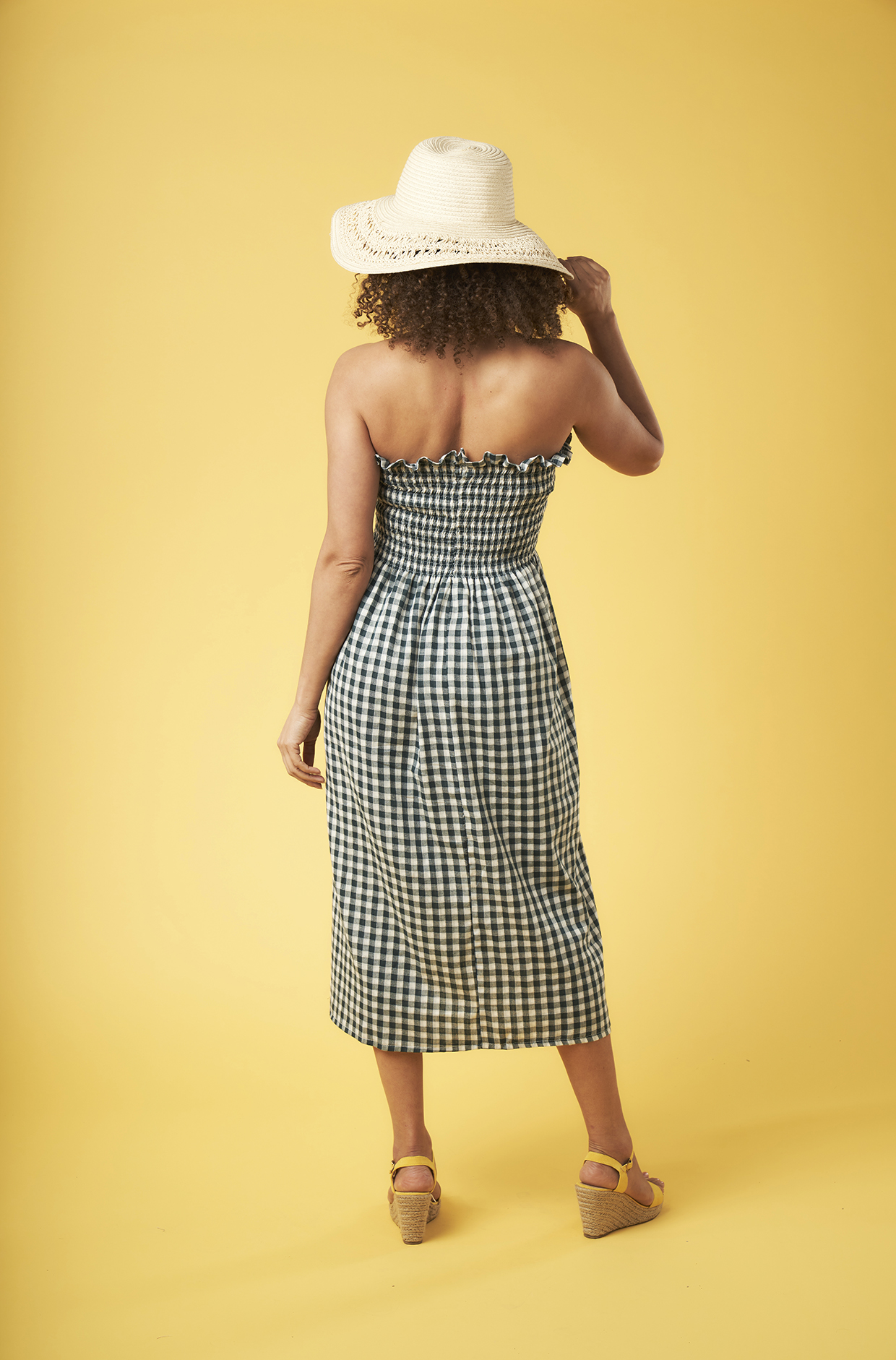How to do shirring (+ free shirring dress pattern and tutorial)
Welcome to the world of shirring! Shirring is a fantastic sewing technique used to create shapes and decorations on garments.
To help you master shirring, we’ve created a complete guide covering all the basics. We explain what shirring is, how to create it and how to use shirring elastic.
We also have a step-by-step tutorial on how to create a shirred dress which is the perfect summer dress sewing pattern!
Before we get started, make sure you check out our sewing for beginners guide to brush up on all your basic knowledge.
What is shirring in sewing?
Shirring is a sewing technique where you stitch elasticated threads in rows. This gathers the fabric, reducing its size to create a cinched, decorative look.
It’s an incredibly popular sewing technique and often features on The Great British Sewing Bee!
What is the difference between shirring and smocking?
The main difference between shirring and smocking is the ratio of the fabric gathering. Shirring mainly gathers on a 2:1 ratio while smocking gathers on a 3:1 ratio.
Apart from this, the techniques are very similar.
What is shirring elastic?
Shirring elastic is also known as elastic thread and can be bought in a variety of colours and quantities.
The elastic is wound onto the sewing machine bobbin, and ordinary thread is used in the needle. Although the elastic will be on the back of your fabric, it still needs to blend in, so choose a colour to match your fabric.
Sewing with elastic is called ‘gathering’ if you only stitch one row, and ‘shirring’ if you stitch more than one.
Before you begin sewing with elastic, take time to read your sewing machine manual as some machines may require you to change the tension of your bobbin.
Head over to our how to use a sewing machine tutorial to learn how to do this.
How to use shirring elastic
Step one
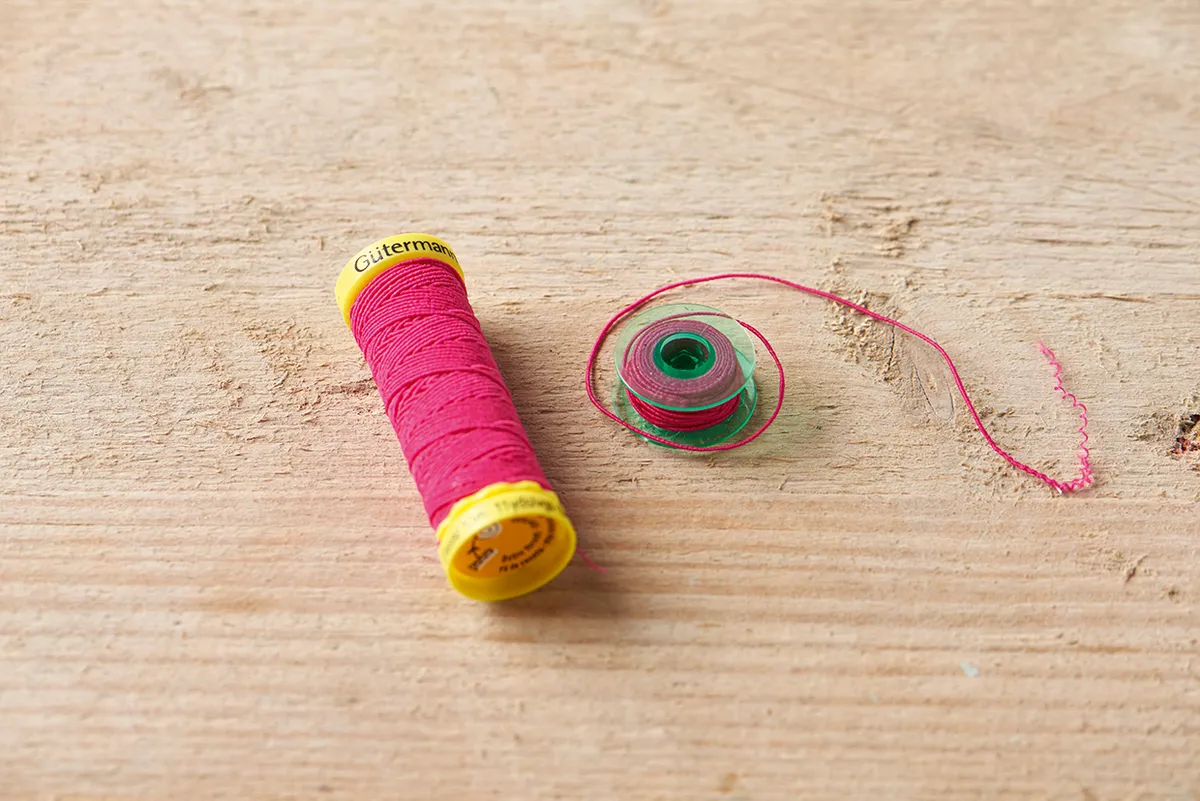
Mark a line on your fabric where you want the elastic to be sewn.
Use tailor’s chalk or an erasable fabric marker so the line won’t show afterwards.
Step two
Use ordinary sewing thread for the top thread in your sewing machine, but wind the shirring elastic onto the bobbin.
This must be done by hand to ensure the correct tension.
Pull the elastic slightly so it doesn’t lie loosely around the bobbin, but don’t pull it too much or it will be overstretched.
This is fairly quick once you get into a rhythm of pulling it to just the right tension so it winds neatly around the bobbin.
Step three
Set your sewing machine to its longest stitch length, to allow a longer length of elastic for each stitch, giving the fabric more stretch and pull when it’s finished.
Step four
Stitch along the marked line as you would normally, keeping the fabric flat as you are stitching.
Reverse stitch at the beginning and end to secure the thread and elastic.
Step five

If you are stitching more than one row, then the fabric will already be gathered after the first one.
Hold the fabric in front and behind the needle to keep it flat, taking care not to overstretch it.
How to sew shirring
Top tips for shirring
Measurements for your shirring dress
- Waist: 1.5 x bust at the fullest part
- Length: distance from armpit crease to the desired hem
Your shirring dress fabric requirements
Fabric requirements are dependent on whether the waist exceeds the width of your fabric.
If the waist fits within the width of your fabric (as does our example) then 1.5m will be sufficient to create this dress from a single rectangle with a centre back seam.
If the waist exceeds the width of your fabric, you will need to double the fabric quantity (3m) to create the dress from two rectangles, with side seams.
The fabric we used for our shirring dress is Gingham cotton double gauze in Smokey from Atelier Brunette
How to make a shirred dress

